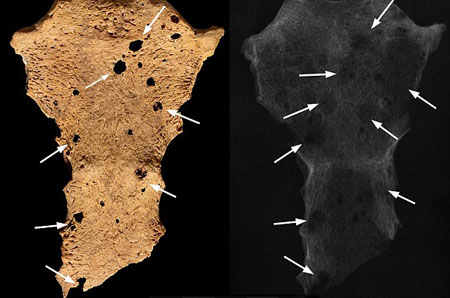Oldest complete example of metastatic cancer in 3,000 year-old skeleton found
 Archeologists have discovered the most established complete case in the realm of a human with metastatic growth in a 3,000 year-old skeleton.
Archeologists have discovered the most established complete case in the realm of a human with metastatic growth in a 3,000 year-old skeleton.
The discoveries are accounted for in the scholarly Journal PLOS ONE today (17 March).
The skeleton of the young male was found by a Durham University PhD person in a tomb in advanced Sudan in 2013 and goes back to 1200BC.
Investigation has uncovered confirmation of metastatic carcinoma, growth which has spread to different parts of the physique from where it began, from a dangerous delicate tissue tumor spread crosswise over expansive regions of the constitution, making it the most established persuading complete sample of metastatic disease in the archeological record.
The specialists from Durham University and the British Museum say the disclosure will help to investigate underlying reason for disease in aged populaces and give experiences into the advancement of malignancy previously.
Antiquated DNA investigation of skeletons and mummies with proof of growth might be utilized to locate transformations in particular genes that are known to be connected with specific sorts of disease.
Despite the fact that malignancy is one of the world's heading reason for death today, it remains very nearly non-attendant from the archeological record contrasted with other neurotic conditions, offering ascent to the conclusion that the illness is predominantly a result of present day living and expanded life span.
These discoveries propose that disease is a current ailment as well as was at that point displayed in the Nile Valley in antiquated times.